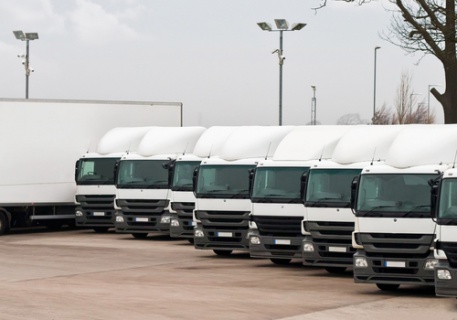How Fleet Can Survive The Big Data Flood

The freight industry has embraced Big Data and the Internet of Things (IoT), but still struggles to translate the flood of information into actionable insight. Mergers and acquisitions are one way businesses are getting up to speed quickly.
Last week the purchase of Cadec Global, the company that introduced the first automated truck driver’s log 30 years ago, by PeopleNet, a trucking company owned by Trible, made headlines. Trimble has a history of using acquisitions to expand not only its reach, but also its expertise. Since 1978, the $2.4 billion company has purchased dozens of companies. With each deal, Trimble acquires technological know-how—from forestry logistics to marine navigation. It’s this catalyst of IT capabilities can will be most helpful to Cadec’s fleet services.
Other transportation companies are also expanding their skill sets through acquisition. Orbcomm completed its acquisition of competitor SkyWave in January, for example. The combination of the two portfolios created the largest space-based machine-to-machine company, expanding Orbcomm’s satellite reach across the globe.
According to analysts, this merger trend will continue. New research from Research and Markets names consolidation one of the most influential trends that will affect the industry in the near future. Consolidation has helped companies’ much-needed access to data, but many have yet to fully take advantage of what data can truly do.
Technology research firm Berg estimates 12 million on-board telematics units in North and South America before the end of the decade. More units equal more data. A fleet of vehicles using GPS devices alone can generate millions of data points daily. Considering telematics units can transmit information on fuel usage, location, engine statistics and more; it’s easy to see how fleet managers can become overwhelmed by it all and feel like they are drowning in data.
In order to reap the operational benefits of IoT and Big Data businesses must consider a holistic approach. Successful use of these tools involves multiple departments including IT, finance and marketing. Sergio Barata a general manager for Telogis told FleetPoint, integration is where success will begin. Adding, “incoherent software can seriously waste fleet managers’ and drivers’ time.” If an all-in-one platform isn’t possible, at the very least tools that allow existing systems to communicate are a must-have.
Barata has a simple recommendation for overcoming information overload. Focus only on what matters. Define clear goals. What key performance indicators matter the most? Fuel efficiency? Driver fatigue? Having a concrete idea of what is being measured can help companies avoid shifting through piles of incoming data. Beginning to streamline the process by generating targeted reports. Other ways fleets can use data to get the most out of their fleets include enabling GPS to find “lost” or underutilized resources and using the ability to create custom reports to stop small misuses or issues before they become bigger and more costly.
Data is the future of fleets. Data and its companion analytics can’t be taken in isolation. The transportation industry now has access to millions of data points that are constantly updating in real time. Industry wide the difficulty is unlocking the capabilities of all of the information generated each and every day. The problem will only grow as each year more aspects of fleets come online generating more data. To truly innovate, it is essential to find way to manage the influx or the power of data will simply become digital noise.
